8 Resource Planning Tips for Multiple Projects in Creative Agencies [2025]
Streamline resource planning for multiple projects with 8 expert tips designed for creative agencies. Boost clarity, delivery, and team efficiency.




It can be overwhelming to work with multiple clients (and projects). Even when you have an agency resource management software like ManyRequests to organize your work.
For example, you may worry about how to navigate unexpected higher priority issues from other clients, which will cause delays to another client’s previously scheduled tasks deadline, like this agency owner.
Here are eight tips that have helped founders like Maximilian Fleitmann of magier, Karl Hughes of Draft.dev, and Haywood Shum of Binery, a bookkeeping service for tech companies.
You’ll feel overwhelmed by multiple projects (tasks and timelines of each) if you don’t organize them in one place (e.g. an agency management platform).
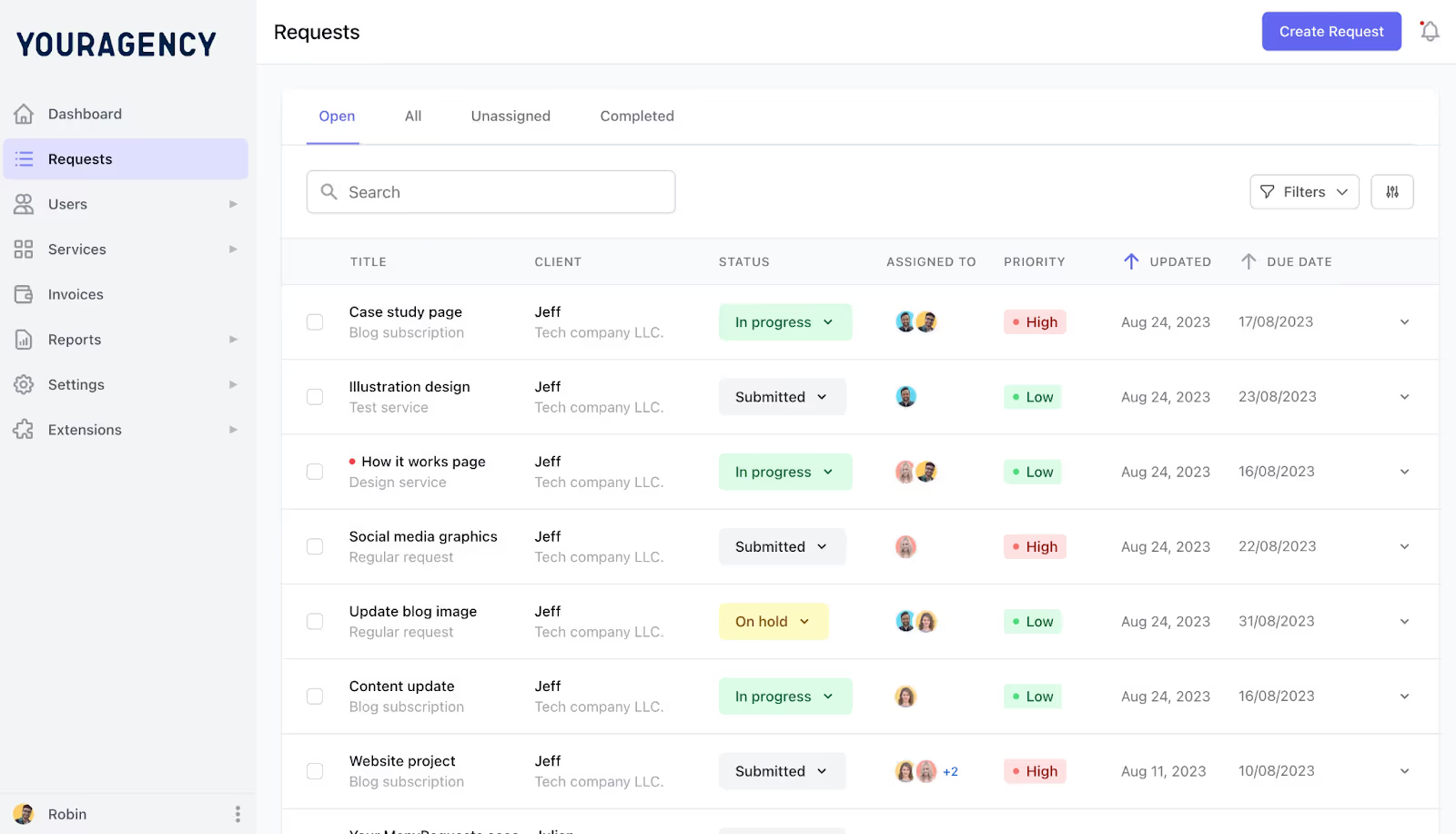
This gives you visibility into everything you have to do for the month, quarter, or any other specific timeline, and helps you avoid the heat of Q4. especially if you’re short-staffed.
So, how do you do this?
Look into a project management and client portal like ManyRequests to handle all client requests, existing projects, and communication (with clients and teams).
You need an agency management tool because even if you try to centralize all projects with spreadsheets or a Word document, you can’t automatically update the tables. You will manually add information, which can affect administrative speed that frees up your time for deep day-to-day work.
So, with ManyRequests, you get an interface where you see every task, the assignees, priority levels, due dates, etc. in one single view.
This gives you a grasp on active and scheduled projects as well as the ones that have due dates and are yet to be submitted. See below for the Kanban view of all active tasks for this demo agency:
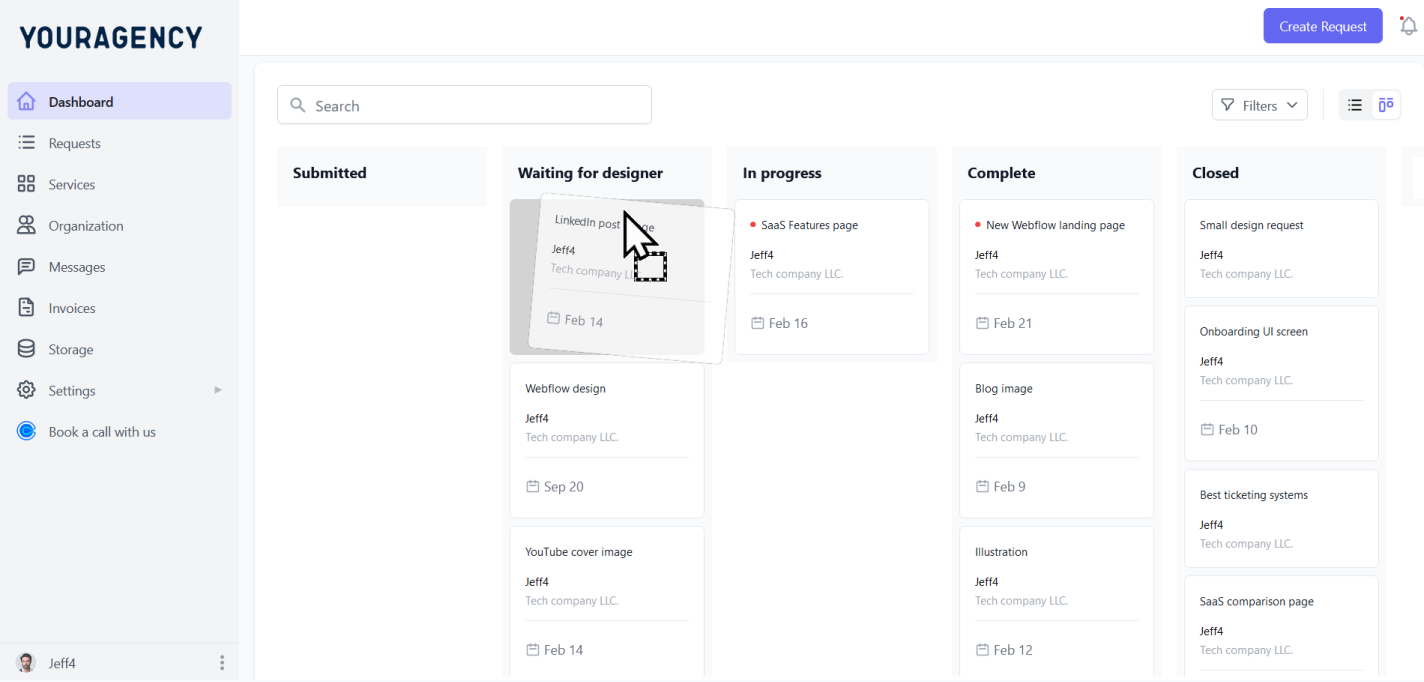
You can also automatically review project briefs through an AI assistant. We talked more about it below:
All these help you immediately avoid confusion during project capacity planning, so you can always meet deadlines.
You can centralize all existing projects and still receive new requests before a workday runs out.
To stay organized and stick to a friendly schedule, identify new independent projects before lumping them together with existing ones. Or assigning them to your team.
This means you need to recognize one-time projects (maybe with new clients) and recurrent ones (likely from retainer clients). You also need to recognize projects that have many tasks attached to them (so you can create task dependencies right away).
This will help you see everything you have to assign to your team in one single place.
With ManyRequests, every new request is automatically populated as a task on your software. Once the client makes a request, all you’ll need to do is to add context such as priority levels, assignees, due dates, etc. so your team can know how important a project is.
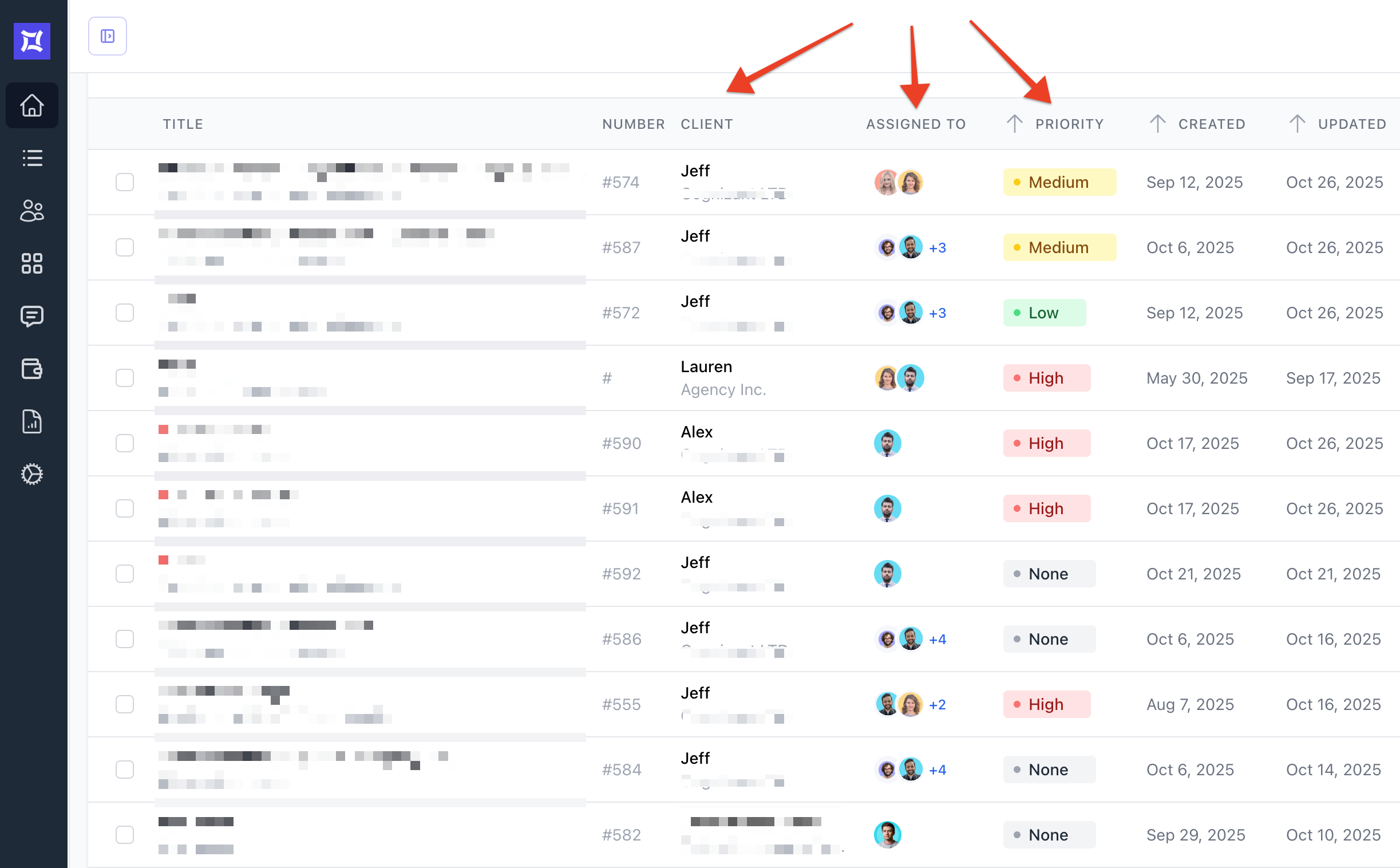
However, this doesn’t mean you should hop on every new task immediately they’re created.
List every active and upcoming project. Queue the tasks that aren’t high priority yet (as you can see below), and when necessary, clarify which tasks are client-tasks or agency activities that can wait till later.

When you’ve gathered all projects and know which one is dependent on others, now is the time to prioritize one project over the other.
Sometimes, this may be complicated.
For example, you have a busy team but your favourite retainer client has a rush job (apart from the typical ones you handle for them). You want to make them happy, but you also have to tend to new clients with critical tasks your junior designers, developers, or content marketers cannot handle.
To prioritize, evaluate each project’s urgency, complexity, and importance to your clients (or your agency). Then use frameworks like Eisenhower Matrix or MoSCoW to decide what needs immediate attention.
Briefly, Eisenhower Matrix categorizes tasks by urgency and importance into four quadrants:
This is most relevant to companies (or agencies) that have internal projects. This model helps you focus on projects that are important to the bottomline over projects that are basically nice-to-haves.
Another way to look at project capacity planning is to follow what dr. fio wrote in her newsletter about how to avoid planning down:
“...the foundation of project success is “developing a clear, informed understanding of what the goal is and why—and never losing sight of it from beginning to end.”
⚡️What this means for you → to clarify direction and justify investment, ask yourself, your team, or clients the following:
You should also know when to say No and walk away, and think slow, but act fast. On this, she writes:
“…it’s tempting to rush to execution, especially when under pressure or in an org that rewards a bias for action; but time invested early usually pays off with faster (and smoother) delivery later. Ask:
This framework is close to the MoSCoW method. It categorizes all tasks into four boxes:
It is self-explanatory, so a more relevant method could be to run a first in first out (FIFO) structure, especially in a creative agency setting.
This means you should prioritize the tasks you received first, and let it trickle down to the task you received last.
There may be a leeway if an urgent task comes along and some of the tasks you have prioritized are low-impact tasks or have flexible deadlines.
All the same, you can use the priority box in the Requests tab on ManyRequests to choose what to prioritize for your team so they can attend to tasks based on these priority levels.

More on this in point number five.
This is the stage where you define deliverables, timelines, milestones, and KPIs for every project. Once you receive the tasks, attach task dependencies to each project that needs it, and state the deliverables (a detailed brief, so to say), the deadline, and probably KPIs or checklists, where applicable.
For example, checklists for a task can look like this, if you use ManyRequests:
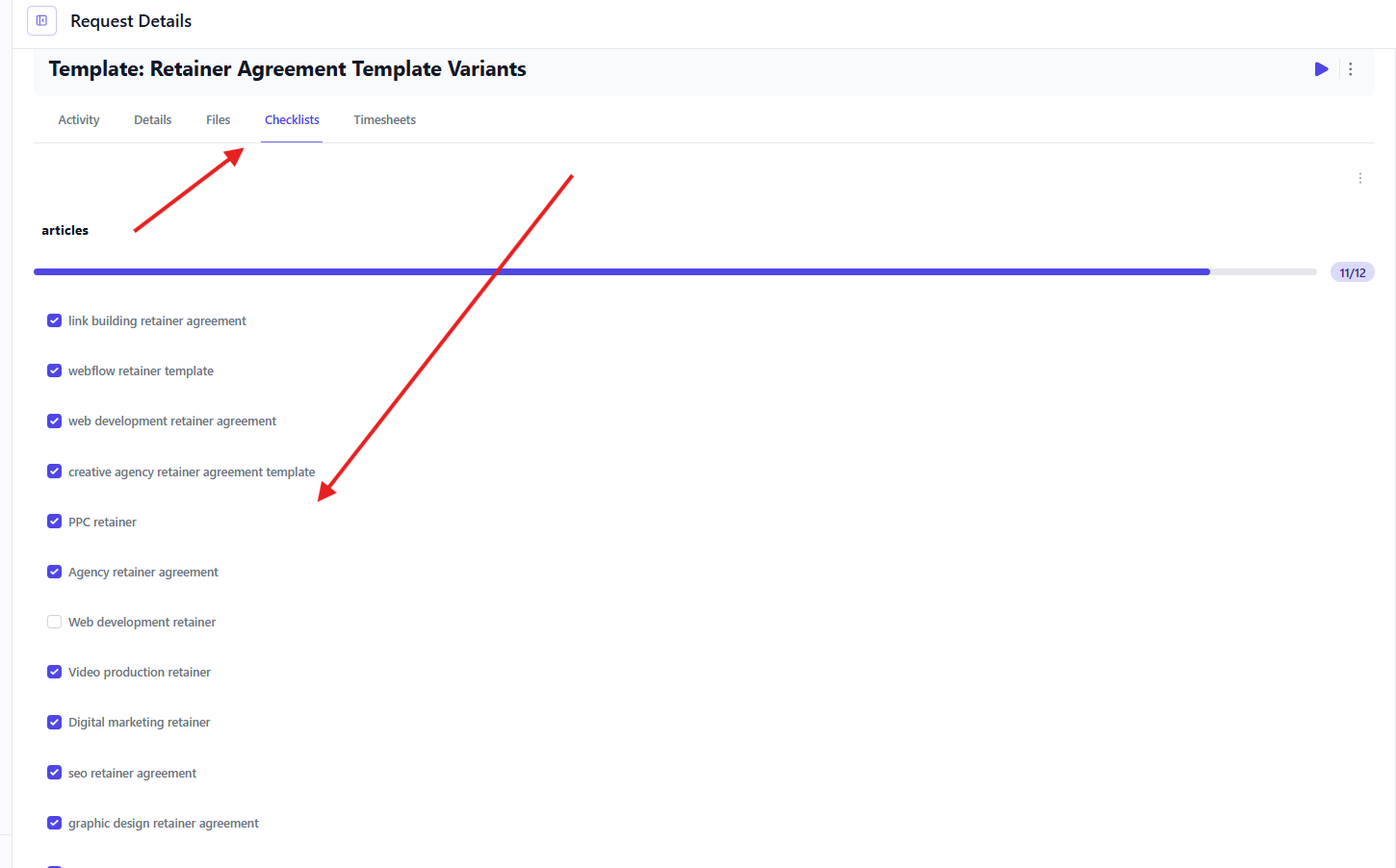
You can also write full information on the task box that’s automatically created on your client portal. This creates clarity and allows you to accurately schedule all tasks.
In this example, the agency owner writes a private message for the team, such that the client doesn't see it but the team member assigned to the task does:
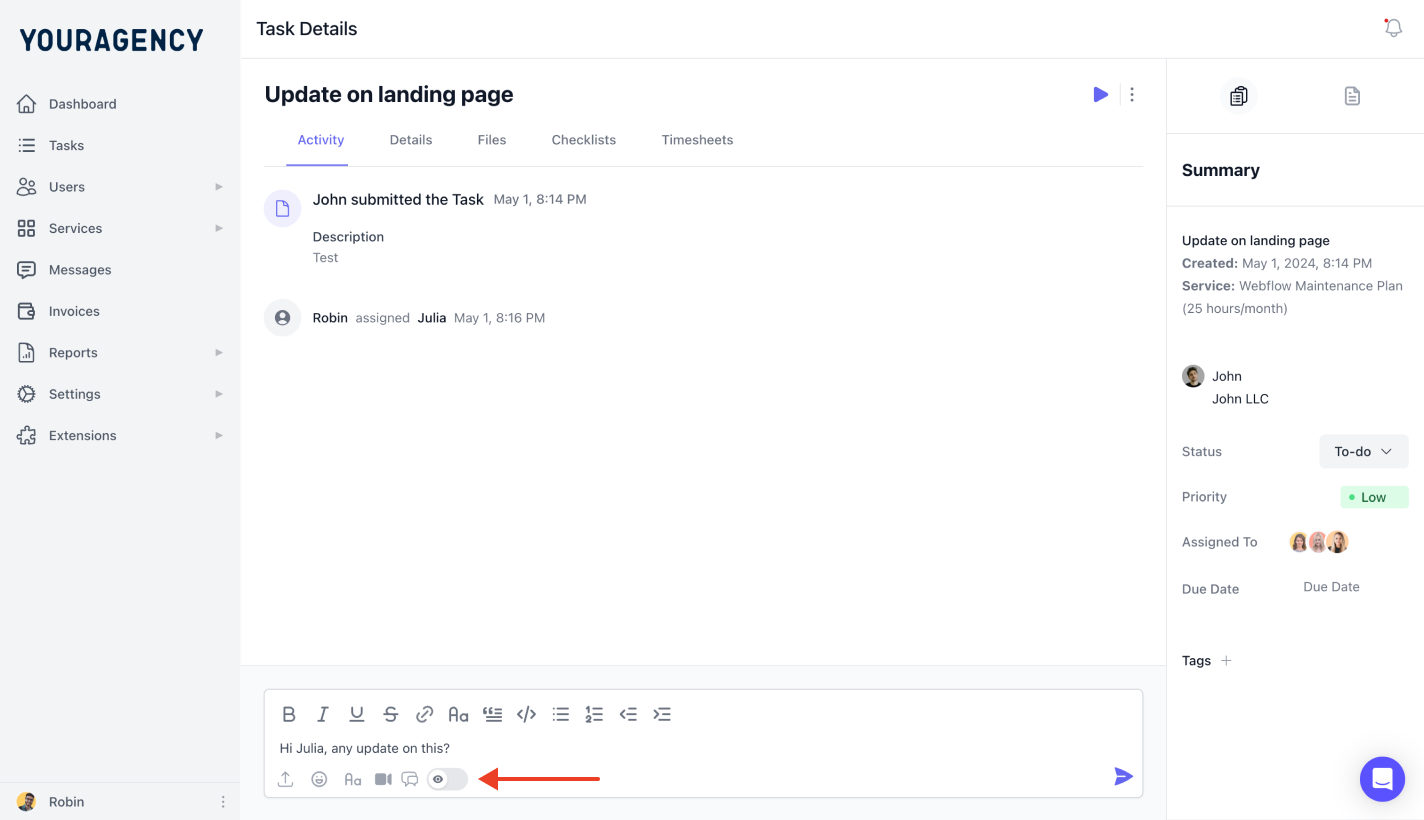
It looks like this:

This can be helpful if you don't want the client to know what you and the assignee discuss about their project.
📌 Read more on how to add internal comments.
Now, this is where many agency owners don’t know how to push back.
To be honest, having multiple deadlines is part of a growing agency. It means you have a lot of clients and your agency is handling a lot of work, which usually, is a sign of growth.
But too much work can cause you to lose valuable clients if you don’t deliver when you should.
To avoid that, always communicate realistic deadlines. You can use the first in first out (FIFO) strategy while working with clients. This way, the first task to come in is the first task to head out.
Another important part of setting expectations is to add contingencies to the work/deadlines. Sure, it’s good to give clients a date and stick to it. But it’s better to add two or three days to the actual deadline you give your team so the team lead (depending on how large your agency is) can review each task before they send it to the client.
Also, saying “we’ll get to it when we can” to clients is not good customer service. It shows that you’re not clear about when they’ll get their work.
Instead, tell them a specific time you’ll review their brief so they can know when they’ll hear back from you. The time you give should be enough for you to review the task thoroughly, brainstorm your angle to the task, find the potential assignee, and agree on a deadline with them.
In cases where clients want you to get on a task ASAP, charge a rush fee and use trusted freelancers.
This is why it’s always good to have a roster of freelancers you can easily reach out to for urgent tasks. They’d most likely charge you a rush fee if they’re busy as well. It's what Jakub Rudnik did when he joined a new company:
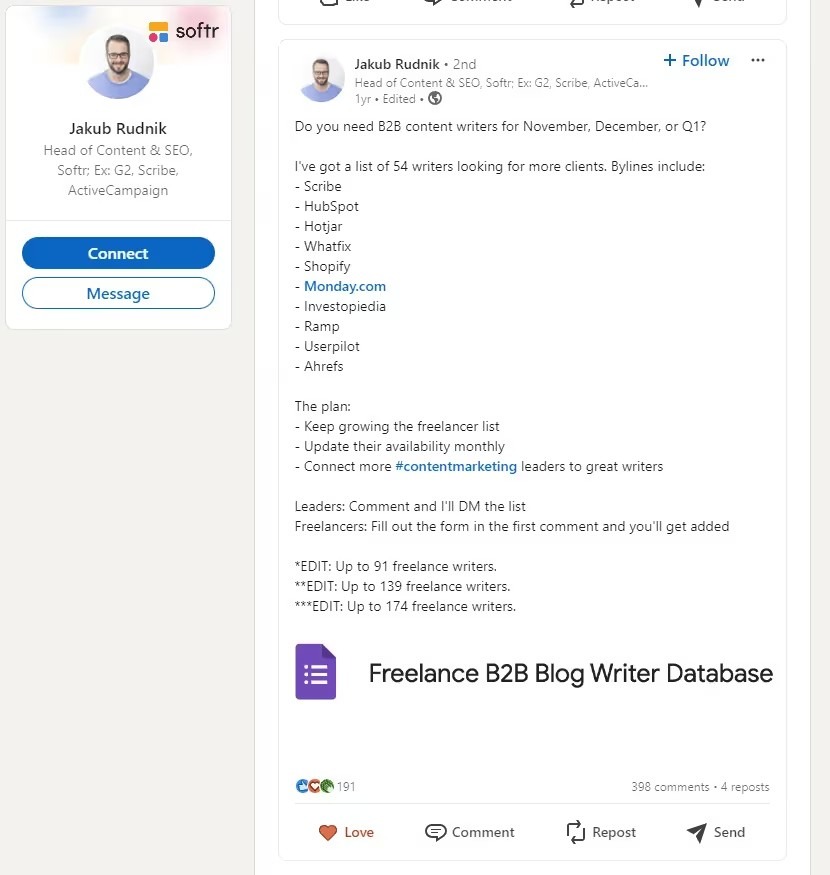
A company also did this with me recently, so imagine what it might mean for your agency especially if you can’t afford new employees:

When you’re aligned on deadlines, assign people to each task, and provide what they might need to excel at it.
This may include access to necessary tools, updates on every information on the company (depending on what the task is), and insights into what is expected at the end of the project. The more access and information your team has, the better.
Also, intentionally assign tasks based on skills and availability. Don’t assign complex tasks to a junior member of your team, or send a retainer client’s work to a new member who is yet to understand the style of the client.
Lastly, make sure none of your team members are overloaded with work. The best model is to ensure there’s enough tasks to go around without overwhelming or underutilizing any member of your team.
📌Read more: tips to manage workload in an agency.
You can also use ManyRequests to figure out which of your team members have pending tasks and who amongst them doesn’t.
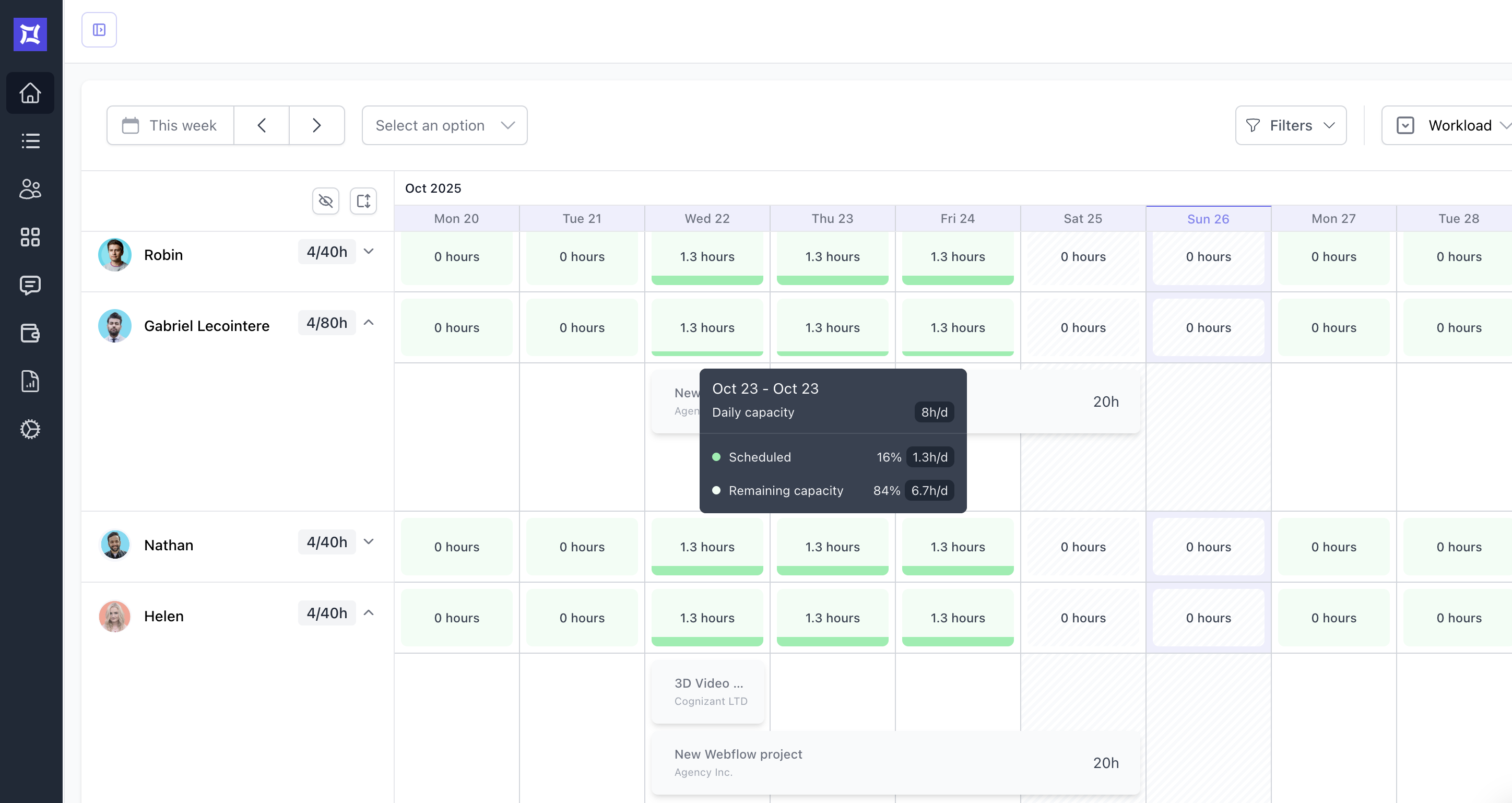
There are tasks that aren’t the actual work of your typical team members. This can be administrative roles like project manager, team lead, or even accounting.
You’ll need to onboard people and delegate these tasks when you have a larger client base. So, what do you do?
Hire competent people and distribute specific tasks to them. This helps you free up more time to take a bird’s eye view at your work and also monitor the performance of your team.
So, based on everything you have set up, review what has changed gradually.
For example, if you don't usually account for the time (and hours) your team members work on revisions before, it's time to make space for it as a priority task. Especially if it’s a deliverable that has to be published (or deployed) within a tight schedule.
You may also need to review your policy when you have rush jobs. For example, a dev agency owner proposed a priority pricing model.
In his words, “the sooner you want it completed, the higher the cost.
This way I can incentivize my devs to work a more flexible schedule where some days they’ll work longer and others, provided their to-dos are completed, they can take off earlier. This method would also allow us some breathing room so we aren’t constantly inundated.”
You can replicate this too.
Bottomline: review progress through your report dashboard. With ManyRequests, you can see which service your clients used the most in a month, quarter, or any other custom date.
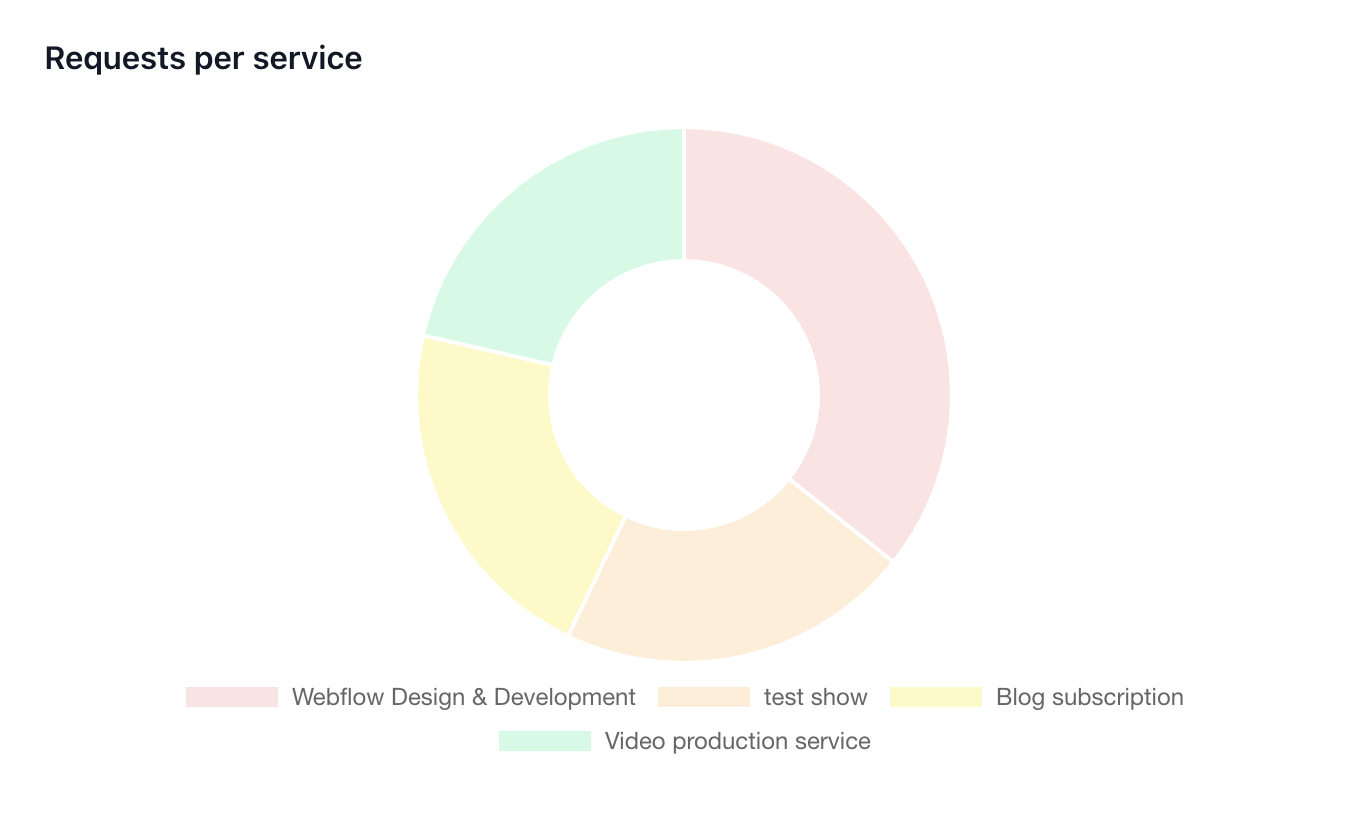
You can also see your billable hours, the team member who was assigned most of the work, and the underperforming team members with low reviews.
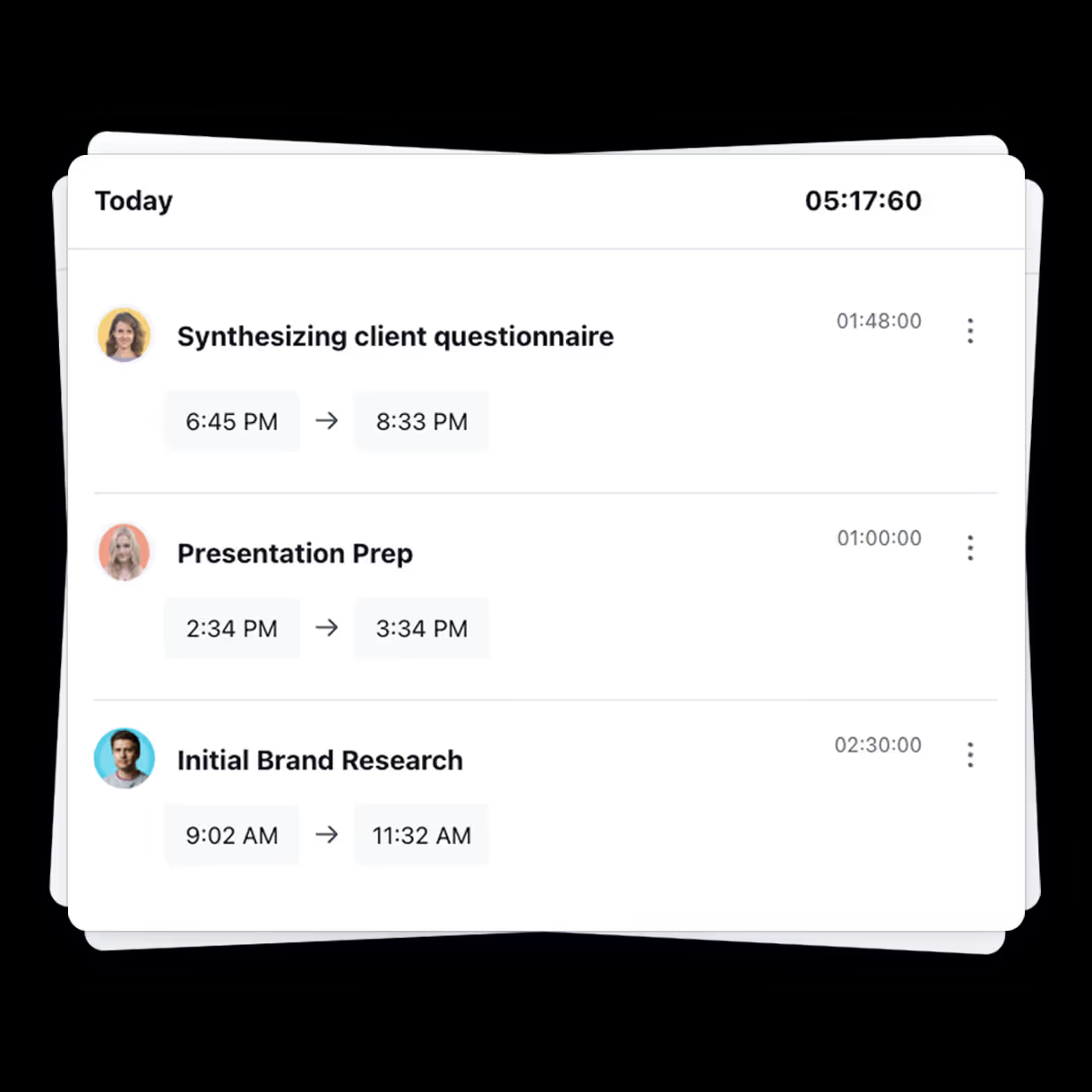
All these can help you efficiently plan your day, month, quarter, and year without missing deadlines.
Now that you know these eight creative agency resource planning tips, you can re-configure how you work to improve business outcomes every quarter.
And you can do that with ManyRequests as your agency resource management software to track time, automatically file invoice, create productized services, and easily onboard your clients to the client portal.
Start with a 14-day free trial to see how ManyRequests works. And afterwards, you can commit to the fair price of at least $29/month for your agency.
List the must-have features your ideal tool should have: e.g. ability to see all tasks, track time, see your team’s capacity, track task dependencies, a client portal, and integrations to essential software. Many of our users at ManyRequests have played with Float, Asana and Monday.com before settling. You don’t have to do the same.
Sign up for a 14-day free trial and pilot with one small team/project. See how it works to see if it fits how your team works.
It depends. Some agency owners integrate capacity features into their PM tool while others prefer a dedicated planner for clearer resource views.
In practice, if your PM tool already supports resource views without too much friction, use it. If not, add a lightweight tool that syncs (or export/import). You can start with ManyRequests and see if it does everything you need a PM and resource management tool to do.
You can:
As you scale, you’ll need to: